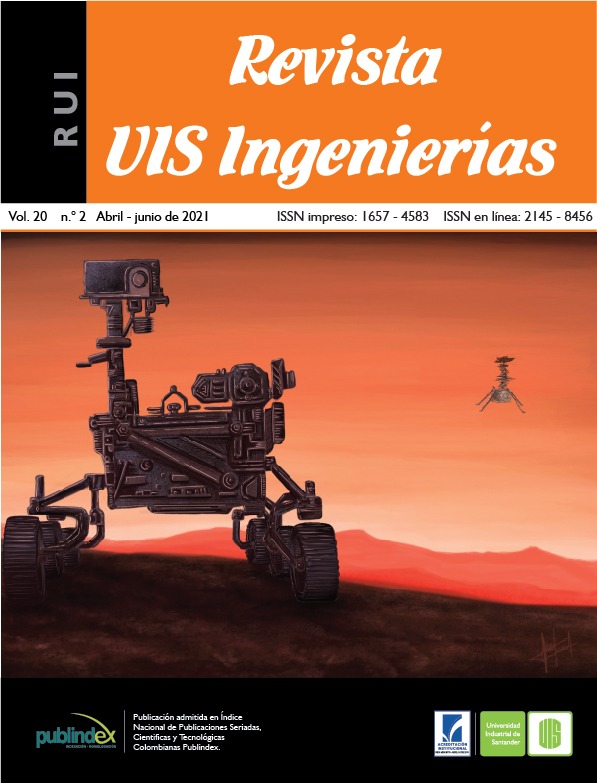Published 2021-02-18
Keywords
- item nonresponse,
- representativeness,
- household survey,
- missing data,
- sample quality
- sample weights,
- R indicator,
- MCAR,
- MAR,
- NMAR,
- hourly wages,
- Colombia ...More
How to Cite
Abstract
Item nonresponse occurs when sample units do not provide information on a particular variable, problem that may affect the representativeness of the sample and the reliability of the estimates. Efforts to reduce the item nonresponse rate do not necessarily improve the quality of the information. Besides the nonresponse rate, representativeness indicators can be used to measure the quality of the collected data. This paper analyzes the wage nonresponse mechanism of a household survey in Colombia and evaluates the quality of the wage information in two different periods of time (2008:4 and 2017:4). The results show a low but increasing nonresponse rate whose behavior does not seem to be associated with the set of observables considered. This result is of value since the selection of the adequate imputation method relies on the assumptions on the missing data mechanism.
Downloads
References
[2] J. G. Bethlehem, F. Cobben, B. Schouten, Handbook of nonresponse in household surveys. New Jersey, NJ, USA: John Wiley & Sons, 2011.
[3] R. M. Groves, E. Peytcheva, “The impact of nonresponse rates on nonresponse bias: a meta-analysis,” Public Opinion Quarterly, vol. 72, no. 2, pp. 167-189, 2008. doi: 10.1093/poq/nfn011
[4] K. Beullens, G. Loosveldt, R-indicators and fieldwork monitoring RISQ Project. Oxford, Manchester, UK: Manchester University, 2010.
[5] N. Shlomo, B. Schouten, V. de Heij, “Designing adaptive survey design with R-indicators,” in Proc. of the New Techniques and Technologies for Statistics Conference, Brussels, 2013.
[6] A. Luiten, W. Wetzels, “Differential survey strategies based on r-indicators,” in, European Conference on Quality in Official Statistics (Q2010), Helsinki, Finlandia, 2010, pp. 4-6.
[7] J. Kappelhof, “The effect of different survey designs on nonresponse in surveys among non-western minorities in the Netherlands,” Survey Research Methods, vol. 8, no. 2, pp. 81-98, 2013. doi: 10.18148/srm/2014.v8i2.5784
[8] B. Schouten, F. Cobben, P. Lundquist, J. Wagner, Theoretical and empirical support for adjustment of nonresponse by design. Statistics, Netherlands, 2014.
[9] R. Tourangeau, T. Yan, “Sensitive questions in surveys,” Psychological Bulletin, vol. 133, pp. 859-883, 2007. doi: 10.1037/0033-2909.133.5.859
[10] J. G. Hariri, D. Dreyer, “Income and outcomes: social desirability bias distorts measurements of the relationship between income and political behavior,” Public Opinion Quarterly, vol. 81, no. 2, pp. 564-576, 2017. doi: 10.1093/poq/nfw044
[11] C. Giusti, R.J. Little, “An analysis of nonignorable nonresponse to income in a survey with rotating panel design,” Journal of Official Statistics, vol. 27, pp. 211-229, 2011.
[12] N. Schenker, T. E. Raghunathan, P. L. Chiu, D. M. Makuc, G. Zhang, A. J. Cohen, “Multiple imputation of missing income data in the national health interview survey,” Journal of the American Statistical Association, vol. 101, pp. 924 -933, 2006. doi: 10.1198/016214505000001375
[13] S. Rässler, R. Riphahn, “Survey item nonresponse and its treatment,” Allgemeines Statistisches Archiv, vol. 90, pp. 217-232, 2006. doi: 10.1007/s10182-006-0231-3
[14] B. Schouten, F. Cobben, J. G. Bethlehem, “Indicators for the representativeness of survey response,” Survey Methodology, vol. 35, no. 1, pp. 101-113, 2009.
[15] C. Skinner, N. Shlomo, B. Schouten, L. Zhang, J. Bethlehem, “Measuring survey quality through representativeness indicators using sample and population base information,” in Proc. of the New Techniques and Technologies for Statistics, Luxembourg, 2009, pp. 18-20.
[16] C.E. Särndal, S. Lundström, “Assessing auxiliary vectors for control of nonresponse bias in the calibration estimator,” Journal of Official Statistics, vol. 24, no. 2, pp. 167-191, 2008.
[17] B. Schouten, N. Shlomo, C. Skinner, “Indicators for monitoring and improving representativeness of response,” Journal of Official Statistics, vol. 27, pp. 1-24, 2011.
[18] J. G. Bethlehem, F. Cobben, B. Schouten, “A new quality indicator for survey response,” AENORM, vol. 19, pp. 24-28, 2011.
[19] B. K. Atrostic, C. Kalenkoski, “Item response rates: one indicator of how well we measure income,” in Proc. of the Joint Statistical Meetings, Section on Survey Research Methods, Washington, 2002, pp. 94-99.
[20] G. Imbens, D. P. Rubin, Causal inference for statistics, social, and biomedical sciences: an introduction. New York, NY, USA: Cambridge University Press, 2015.
[21] S. P. Sinha, J. Ramoni-Perazzi, G. Orlandoni-Merli, E. Torres, “Weight adjustments after sub-sampling cross-sectional data,” Revista Estadística Española, vol. 59, pp. 45-57, 2017.


